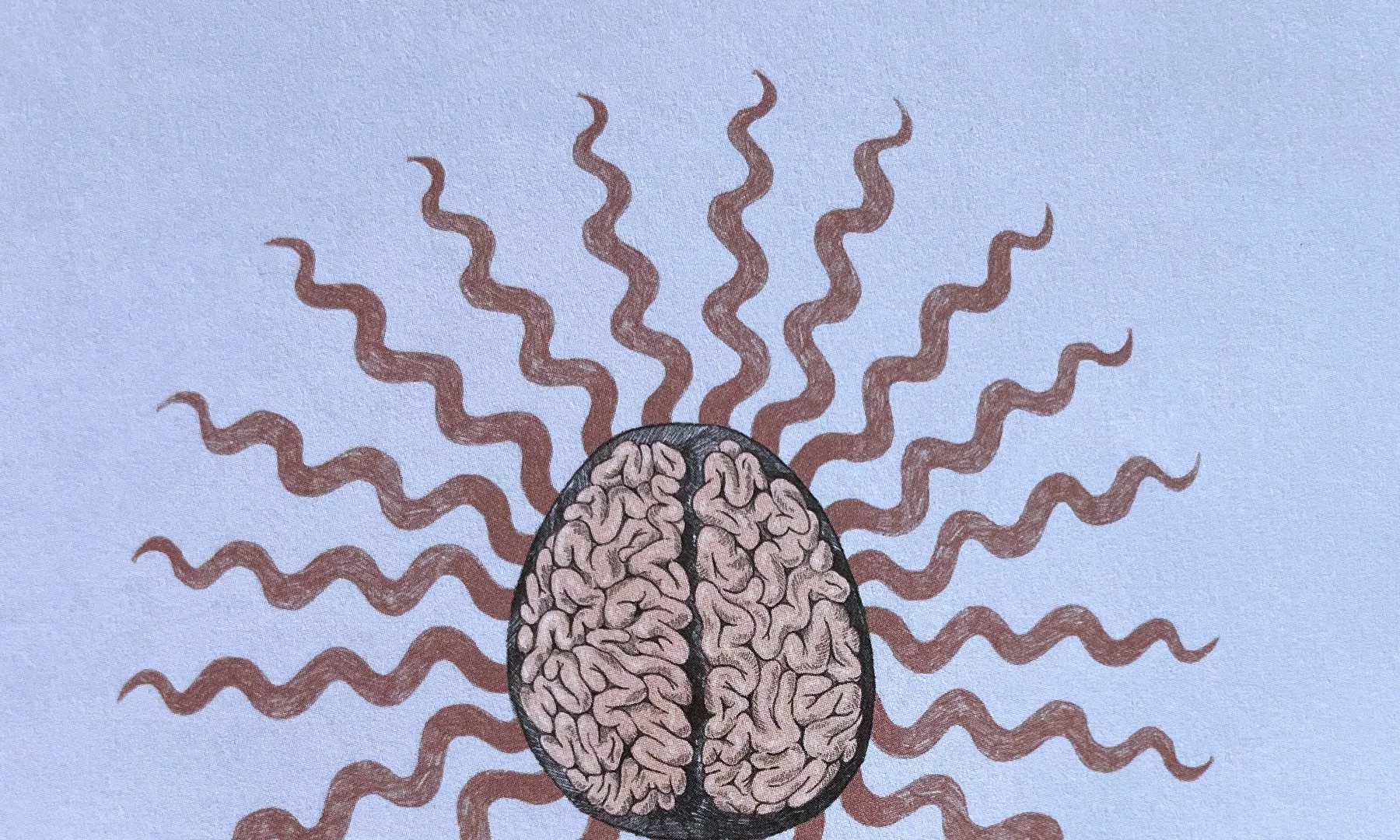A deep dive into the world’s most pervasive headache. Image credit: Poppy Williams.
Major advancements have been made across many medical fields. We have targeted therapies for certain cancers, effective treatments for HIV, and vaccine technologies that are proving crucial in preparing our immune systems to fight COVID-19. And yet, our understanding of one ailment remains rudimentary at best: migraines.
Migraines are more than just your average headache. These debilitating waves of extreme pain often render people incapable of carrying out daily tasks. According to the World Health Organization, migraines are among the top ten leading causes of disability in the world, affecting nearly 15% of people worldwide. Despite its high prevalence and morbidity, much remains to be uncovered with respect to the migraine mystery.
What we know
Migraines are typically defined as primary headache disorders, meaning that there is no identifiable cause. Their frequency and duration are also hard to pin down. They can happen sporadically (known as episodic migraines), or can occur almost constantly as part of a chronic migraine disorder. Symptoms can last anywhere from four hours to three days. These symptoms are severe: pulsating pain, nausea, sensitivity to light and/or noise, and inability to attend work or school are just some of the ailments sufferers have to contend with.
Migraines are more than just your average headache.
The burden of disease is not evenly distributed. This means that certain factors can significantly increase your risk of developing migraines. For example, women are two to three times more susceptible to migraines than their male counterparts. A family history is another major risk factor which can increase your chances of getting a migraine by two-to-three-fold. Particular foods (such as caffeine, alcohol, and chocolate), increased stress, sleep changes, and hormonal changes (such as sudden drops in estrogen that occur during the menstrual cycle), can also trigger the onset of a migraine. Nonetheless, how these triggers and risk factors contribute to the underlying physiological processes of a migraine is still unknown.
What we’re trying to figure out
Whilst we still do not know exactly why migraines happen, multiple theories exist that attempt to provide an explanation. For example, Vasogenic Theory suggests that dilating cranial vessels creates the pulsating and pounding pain, whereas constricting vessels reduce oxygen delivery, leading to other migraine symptoms.
This theory was long considered the leading explanation in migraine pathophysiology. But this changed in the 1980s when the discovery that vascular changes do not necessarily correlate with the onset of migraines forced a rethink. Cortical Spreading Depression (CSD) Theory and Neuronal Theory have since become the forerunners in solving this head scratcher.
For the 30–40% of people who do not respond to first-line therapy, migraines are an uphill battle with profound effects on quality of life.
CSD tries to explain migraine auras. Auras are the sensory changes—often visual—that happen in the minutes or hours leading up to a migraine attack. CSD suggests that a wave of overactivity in cortical neurons is followed by a wave of inhibition. Amid these cellular changes, excitatory neurotransmitters (chemical messengers stimulating neurons to communicate with one another) are often released. These activate key pathways, which alter the metabolism and blood flow, leading to the aura. The migraine follows shortly after.
Neuronal Theory sees things differently: migraines result from an electrical disorder of the brain. Under this hypothesis, cells in the brain programmed to deliver spikes of serotonin go awry, leading to decreased levels of this neurotransmitter. Serotonin has broad excitatory and inhibitory functions in the brain so any disruptions can lead to a group of neurons—known as the trigeminovascular system—being activated. Activating this system releases neurotransmitters and peptides involved in the pain response, ultimately evoking migraine symptoms. Together, these two theories suggest that migraines result from neuronal abnormalities, rather than strictly vascular issues.
The problem
Diseases with mysterious causes are exponentially harder to treat. Existing treatments prove effective for only some patients. Medications that act on serotonin receptors (known as “triptans”), and those that stimulate the constriction of cranial vessels through activation of adrenergic, serotonin, and dopamine receptors (called “ergots”), can help to stop migraines once they have started. Pain medication can also provide additional relief for some affected individuals.
Unfortunately, some people experience refractory or resistant migraines, which makes symptoms much harder to control. For the 30–40% of people who do not respond to first-line therapy, migraines are an uphill battle with profound effects on quality of life.
This burden not only falls on individuals, but also on the economy. A 2018 estimate revealed that migraines contribute to over 80 million missed workdays per year in the UK. The cost of absenteeism and lost productivity due to migraines is estimated at upwards of £8 billion per year.
Migraines drain the healthcare system, the economy, and affected individuals. Making novel treatments is vital for improving the quality of patients’ lives and reducing the associated social and economic costs. Solving the mystery of migraines by understanding their underlying pathophysiology is essential for the development of effective treatments. Until then migraines will remain a head scratcher.





